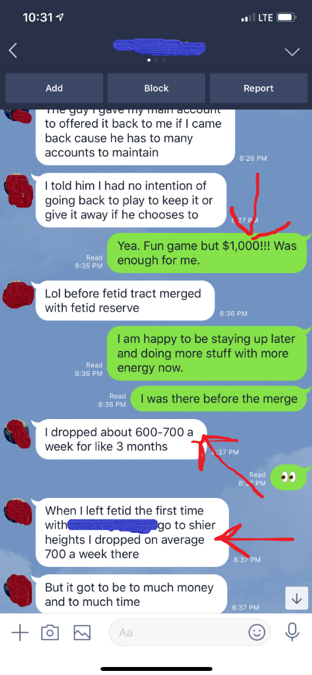William Gibson once wrote that “The future is already here — it’s just not very evenly distributed.” When predicting change in a market, sometimes it’s helpful to look for analogs where the existing practices are already present, even if those practices might appear far away from the present situation.
It’s hard to imagine a more exciting analog for the future of retail selling than what has been going on in the mobile gaming space. In many ways mobile games present themselves as a perfect analog of a retail industry that was created after the birth of the smart phone. While the goods that they sell are “virtual”, the dollars that they command are anything but. Consumers have flocked to these “retailers” at such rates that the gaming industry is now worth $140 billion…larger than the global film industry.
Gaming’s current best-in-world monetization is driven by a few core aspects:
1. Personalization – Much like in fast moving consumer goods, where shoppers are constantly returning and replenishing a basket of goods, video games have very high traceability. They know where you are in the game progression, what you tend to respond to, and what you need right now. What are your friends in “Guild Chat” buying? Are you the type of player who’s constantly running low on bullets and shields, or are you a stockpiler focused on building up your castle and your lands? Games are built from the ground up with dynamic user segmentation systems to adaptively uncover different cohorts of players with similar behaviors.
2. Everything is a Test – Games are built with highly modular architectures, so everything from the strength of a suit of armor or the store item selection can be treated as a variable. Games’ foundations lie in content management systems (CMS) that can adaptively design experiments and flexibly customize these end user experiences
3. “Hands off the Wheel” – The very best video game companies (like Machine Zone) leverage automation and artificial intelligence to dynamically create offers. Each “segment” of shopper is constantly seeing different A/B test variants of creative pack content, and based on the response of the various segments, the offers are constantly adapting. Due to the automation and intelligence provided by these solutions, MZ has driven monetization that’s reportedly an order of magnitude higher than games in the same genre, despite having fewer than 10 employees in sales or live operations per LinkedIn. In 2015 the average paying user reportedly spent $550 on their game. In many ways this echoes the recent choices that Amazon has made with their merchant functions.
Here’s an example:

Source: MZ’s Final Fantasy XV: A New Empire
These two advertisements popped up at the same time for two different players in the same game server who were both at an equivalent power level. The player on the left had a chance to acquire lots of assorted game goods, as did the player on the right. But upon closer inspection one player had the chance to acquire 36 packs of 500 million VIP points, while the other had the chance to buy 45 packs of 400 million points. They both total 18 billion VIP, but MZ is trying to figure out where to put the value—more packs of points or a higher expressed value per point.
You might also notice that the “Elemancy Hall Blueprints”, which are needed to build an important building in the game, are not evenly distributed. The player on the left had already paid to “unlock” the building, and so those credits were transferred into a higher number of blueprints to advance the building further, while the player on the right had not. Thus the “Elemancy Hall Unlock” was present, but with a correspondingly lower amount of blueprints. (You might also notice that the algorithm isn’t perfect—4 building unlocks for the Elemancy Hall are unnecessary—in the game you can only use 1 to open up the building and the rest are useless—but despite these flaws the numbers don’t lie for MZ… the personalization works).
Hopefully you also noticed the price for these packs… $99.99 US Dollars.
The players in the games also regularly compare notes on good packs—screenshotting good ones on 3rdparty apps like LINE and making sure their community learns about the best ones to buy. The spending levels can get large…



In a world of digital convergence, where the majority of brick and mortar shopping trips already touch a digital asset like a retailer loyalty app, and the shelves are starting to digitize with initiatives like Kroger’s EDGE technology, or via hardware providers like SES Imagotag with Electronic Shelf Labels, it’s not hard to imagine the parallels between the practices of these different retail segments starting to converge. Could we ever see a world where grocery stores act this way?

Safeway has a great loyalty app. In it you can see the offers that are for sale that are available to everyone (the Weekly Ad tab), as well as coupons which may or may not be personalized (Just for u). You might notice that Oreo cookies are offered for sale on both at the same time… however today for most CPGs and Retailers there is usually little coordination between these two buckets of spending, and the offers are created manually by humans who are deciding what’s best to run. Unlike in Video Games, there isn’t one highly parameterized CMS, with an adaptive A/B testing framework that’s constantly probing which offers might work for which segment of shopper, in a hands off the wheel fashion where the entire process can be real time and hundreds of millions of dollars of promoted revenue could be managed by fewer than 10 people.
What might happen if they did?
My bet is we’re going to see a radical change to the way that fast moving consumer goods are going to be sold over the next five years. Dynamic pricing is coming… it likely won’t take the form that the media might hype it to (e.g., your bananas costing more in the afternoon, or grocery prices getting more expensive when traffic to the store surges), because ultimately that’s a poor consumer experience and loyalty will be damaged. However, it feels inevitable to me that shelf edge experimentation will start to scale…prices will be tested up and down to determine the best way to respond to competitive actions from players like Amazon (who are executing hundreds of price changes a day), and changes will be rolled out to everyone based on the learnings.
Similarly, there’s simply too much value to be captured by an integrated CMS that blends personalization, A/B testing, and automation to allow a much more segmented view of personalized promotions. We’re already seeing a shift to the $93 billion in trade spending funded by the top 200 CPGs in the U.S. alone into more personalized trade spending events at retailers like CVS… where sales leaders from some of the largest CPGs are already seeing ROIs that are 2-3x higher on their personalized investments. Just imagine how much more value could be unlocked with a modern software architecture that could allow these funds to efficiently scale into personalization without a large number of live operations team and manual data entry?
David Moran is the Co-founder and Chairman of Eversight, a company that provides AI-powered pricing and promotions for brands and retailers. We are on a mission to transform how $3.4 trillion is spent in North American consumer goods.
Special thanks to Enrico D’Angelo of Roblox for his wisdom and advice, and for helping me learn more about the exciting world of gaming.